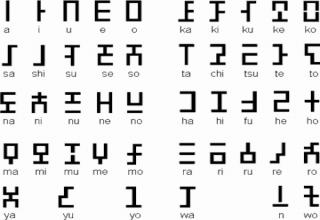

By stretching or compressing it at different positions, different mechanical characteristics of the deployment were obtained. The influence of the geometric parameters of the unit cell, such as its length, thickness, and the center angle of the cylindrical shell, on the snap-through instability was analyzed. The snap-through characteristics of the cylindrical shell were analyzed, and the curvature of the second steady state was obtained using the minimum potential energy. Then, the deployment mechanism and parameterization of the structure were analyzed. The accuracy was verified through experiments and the finite element method. By assuming that the rotational stiffness of the spring is related to the length, elastic modulus, and thickness of the cylindrical shell, the coefficients used to quantify the stiffness of the rotational spring were obtained through a finite element calculation and the mechanical characteristics of the structure were obtained.


The elastic deformation energy stored in the mechanical system was calculated, and the applied force was obtained after deriving the displacement. First, a mechanical spring model based on a quarter of unit cell was established to predict the mechanical characteristics of its deployment. It has rotating rigid squares and cylindrical shells to improve the flexibility of the structure and produce snap-through instability. This paper proposes a flexible kirigami structure. Designed antenna has the advantages of compact stowage, easy deployment, light weight, enhanced electromagnetic performance, and multi-functional practicability, which can be widely used in wireless communication systems to provide various services. Finally, multiple antennas working at different frequencies but with similar radiation characteristics are concentrated into the same combined antenna aperture through reconstruction, so that the antenna has the capability of multi-frequency operation. Fourth, multi-port and omnidirectional bending and twisting are used to explore the effect of antenna geometry reconfiguration on electromagnetics. Third, the effects of the length of the metal strips and different instability configurations of the spherical shell on the frequency reconfigurability of the antenna in deployable and folded configurations are analyzed. Then, the accuracy of the calculation method of Kresling origami-based reconfigurable helical antenna is analyzed, and its geometry is changed to control the performance parameters over time and achieve versatility. First, the mechanical properties of the designed antenna during the smart deployment process are analyzed, which can be helically deployed, with super-large compressibility and torsion-contraction coupling effect. In order to realize the frequency reconfigurability of helical antennas and increase frequency bandwidth, this paper adds a spherical shell to the top of the Kresling origami, so as to achieve maximum frequency reconfiguration and electromagnetic stealth. Foldable and reconfigurable helical antennas change shape to adapt and reconfigure their electromagnetic properties.


 0 kommentar(er)
0 kommentar(er)
